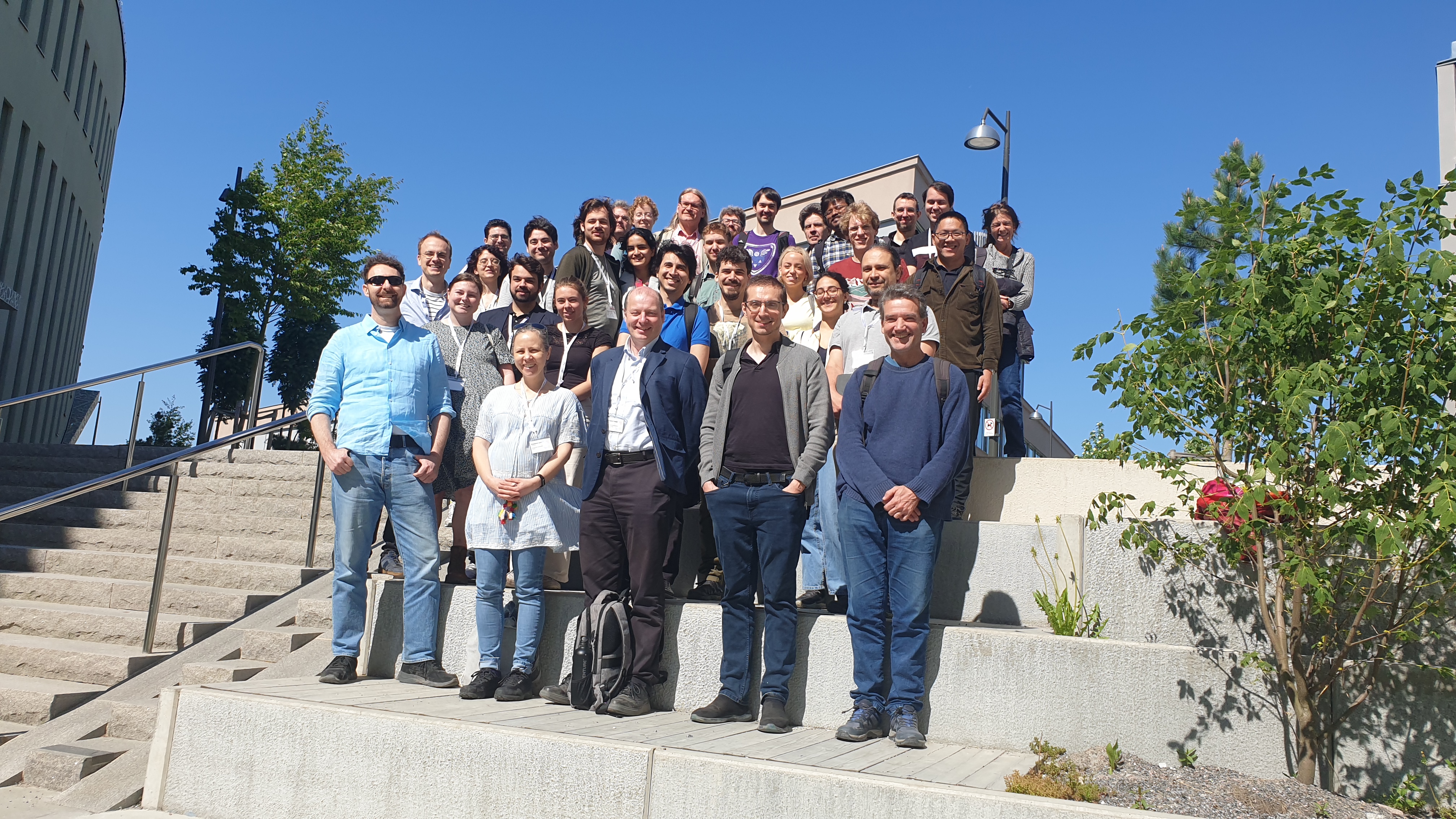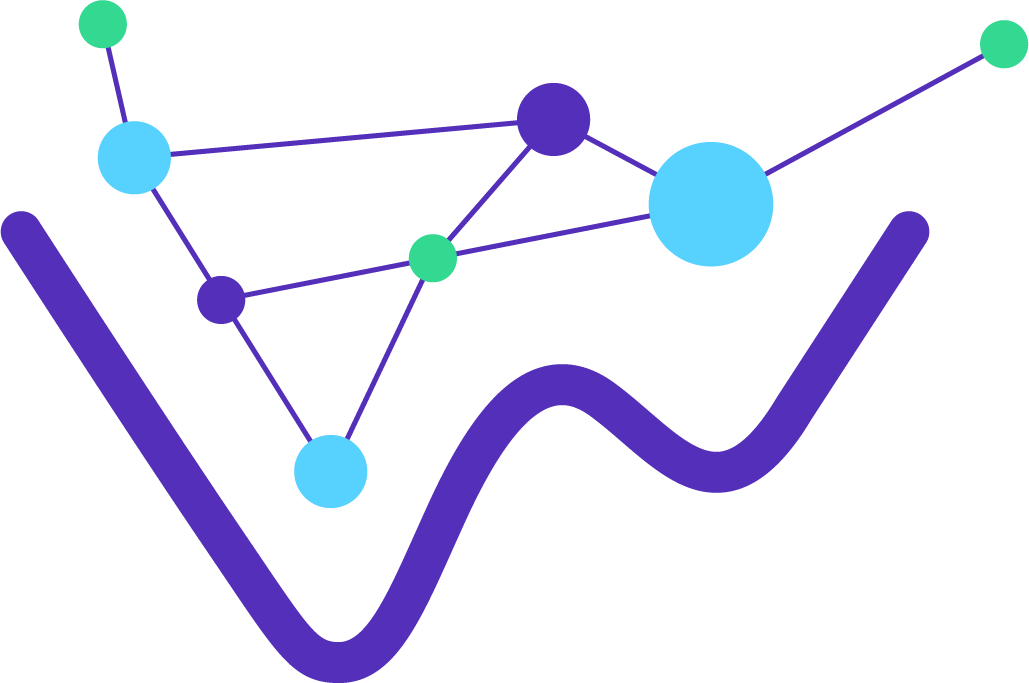
Scope
The most fundamental laws of physics are written in the language of quantum field theory, which combines in a single framework quantum mechanics, classical field theory, and special relativity. The interplay between these fields leads to novel conceptual and technical challenges, but also opens a new window for a deeper understanding of fundamental properties of quantum matter in spacetime. Quantum information has proved a powerful tool to tackle some of these challenges and is playing an increasingly prominent role in the field.
The workshop aims to create a collaborative space for researchers working on several aspects of quantum field theory to interact. Main themes include
- measurement theory
- causality and channel capacity
- entanglement
- formal foundations
- localisation
- and other information-theoretical aspects in quantum field theory.
This workshop takes place in the fourth week 20th - 24th May 2024 of the WINQ program on Complex and Quantum Systems.
Invited Speakers
Daniela Cadamuro
Horacio Casini
Chris Fewster
Marina Huerta
Achim Kempf
Natalie Klco
Maria Papageorgiou
Esko Keski-Vakkuri
Schedule
All morning talks will be in room 4205, on level 4 of Nordita's building (Albano hus 3).
| Monday 20th | Tuesday 21st | Wednesday 22nd | Thursday 23rd | Friday 24th | |
|---|---|---|---|---|---|
09:00 Registration (Floor 6) 09:20 Welcome (Floor 4) | |||||
| 09:30 - 10: 30 | Maria Papageorgiou | Achim Kempf | Marina Huerta | Esko Keski-Vakkuri | Participant presentations |
| 10:30 - 11:00 | Fika | Fika | Fika | Fika | Fika |
| 11:00 - 12:00 | Chris Fewster | Natalie Klco | Horacio Casini | Panel Discussion | Participant presentations |
| Lunch break | Lunch break | Lunch break | Lunch break | Lunch break | |
| 15:00 Nordita Fika (Floor 6) | 14:30 WINQ Seminar -- Gerald Milburn (Floor 6) | 14:30 Fika (Floor 6) | |||
| 17:30 Social Dinner (Restaurant Proviant) |
On Monday there will be an additional welcome to Nordita Fika at 3:00 PM at Nordita, floor 6. The workshop dinner will take place on 21st (Tuesday) at 5:30 PM in restaurant Proviant Albano.
Abstracts
Maria Papageorgiou - Causality in QFT: the scattering paradigm and beyond
The formulation of local measurement theory for QFT has recently been an active area of research. In contrast to the asymptotic measurement framework that was enshrined in QED the new proposals aim to supply a measurement framework for measurement in local spacetime regions. In the history of QFT, in parallel to the establishment of the asymptotic scattering paradigm, there is a series of attempts to model local measurements in QFT that we will briefly review in the first part of this talk. Considerations of relativistic causality played an important role in these developments. Causality issues, such as impossible measurements, today have been addressed for local QFT measurements that are formulated as local scattering maps. I will focus on the analysis of causality in the detector model approach to QFT measurements, where the local scattering maps are induced by non-relativistic probes coupled to the field. Finally, I will discuss causality beyond the scattering paradigm, for histories-based approaches to QFT measurements.
This talk will be based on the following three papers: 1, MP, D. Fraser, Found Phys 54, 26 (2024), 2. D. Fraser, MP, EPJ H 48, 14 (2023), 3. J.de Ramon, MP, E. Martin-Martinez, Phys. Rev. D 103, 085002 (2021).
Chris Fewster - Local measurement theory for quantum fields
Many presentations of quantum mechanics include a postulate that the state of a system undergoes an instantaneous change following a measurement. This is clearly incompatible with special and general relativity and raises questions concerning the description of measurement in quantum field theory (QFT). Attempts to extend measurement postulates to QFT by hand have produced pathologies, such as the "impossible measurements" described long ago by Sorkin. I will present a recent operational approach to these questions, which models measurement of one quantum field (the system) by coupling it to another (the probe). This is all accomplished in a model-independent way within algebraic quantum field theory (AQFT). The resulting framework provides a description of measurement in QFT that is causal, covariant and consistent, and includes state update rules that are derived from the formalism, and works equally well in flat or curved spacetimes. As well as covering the basics of the formalism I will touch on some more recent developments, including asymptotic measurement schemes, links to quantum reference frames, and how Bell inequality violation is described in this framework.
The talk is mostly based on joint works with Rainer Verch, Henning Bostelmann, Maximilian Ruep and Ian Jubb; I will also mention recent joint work with Daan Janssen, Leon Loveridge, Kasia Rejzner, James Waldron.
Achim Kempf - Correlations, representations and the emergence of spacetime
There are reasons to expect that spacetime might change dimension at sufficiently high energies and/or that, at energies as high as the Planck scale, spacetime might dissolve into an essentially non-geometric entity. I am proposing that the physics of the emergence of spacetime, and its possible changes of dimension, corresponds to the mathematics of the emergence of geometric representations of a fundamentally non-geometric but information-theoretic theory in certain energy regimes. The number of spacetime dimensions is found to be determined by the balance of a generalized bosonic pull and a fermionic push. This balance depends on the number of bosonic and fermionic species present at a given energy scale. One thereby obtains a mathematical model for the changing of the number of dimensions of spacetime with the energy energy scale, and also for the dissolution of spacetime into a non-geometric regime at the Planck scale.
The talk is based on these papers: A. Kempf, Frontiers in Physics, 9, 655857 (2021), arxiv:2110.08278 M. Reitz, B. Soda, A. Kempf, Phys. Rev. Lett. 131, 211501 (2023), arxiv:2303.01519
Natalie Klco - Quantum Simulating (with) Nature's Quantum Correlations
We will discuss and quantify the ability of simple quantum field vacuums to distribute entanglement at spacelike separations, and how such entanglement might be accessed experimentally. Beyond deepening understanding of the quantum information structure of fundamental Nature, the exploration will inspire a new role for trapped ion quantum architectures in the design of quantum simulations of quantum fields.
Marina Huerta - Entanglement, Global Symmetries and Topological contributions
In theories based on algebras of operators invariant under a global symmetry, the entanglement entropy is non uniquely defined. This is a direct consequence of the fact that the algebra assigned to the region, in case of regions with non-trivial topology, does not satisfy the expected property of additivity/duality. This can be understood by noticing the existence of operators which cannot be locally generated within the region. These are called twists and intertwiners belonging to the region or its complement respectively. In this scenario, novel universal contributions, topological in nature, arise.
Horacio Casini - Features of the relation between algebras and regions, the ABJ anomaly, and Noether's theorem
Haag duality is a simple property of algebras attached to regions in QFT that expresses a form of completeness of the theory. Violations of Haag duality are related to order parameters for different phases, in particular the confinement phase for gauge theories. Some natural entropic order parameters that satisfy a "certainty relation" can be defined. Violations of Haag duality may be charged with respect to global symmetries. When this happens for a continuous symmetry there is an obstruction for the validity of Noether's theorem. This is behind all known examples when the Noether current is absent, including the ones covered by Weinberg-Witten theorem. An abstract classification of the simplest possibilities is divided into two classes. In the first one there are non compact sectors, which leads to free models. The other possibility, allowing interacting models, corresponds to the ABJ anomaly. This interpretation unifies the features of the anomaly --- anomaly matching, anomaly quantization, non-existence of the Noether current, and validity of Goldstone theorem --- from a symmetry based perspective.
Gerald Milburn - Quantum Clocks and the Role of Measurement
All clocks are necessarily irreversible and thus subject to uncertainty. In the classical case the uncertainty arises from thermal noise. In the quantum case the uncertainty arises from the nature of quantum measurement. I present examples of quantum clocks and highlight the essential role played by measurement. This leads to a physical implementation of the Rovelli-Connes thermal time hypothesis.
Esko-Keski Vakkuri - Majorization, Wigner negativity and QFT
Magic is a name for a resource that provides quantum advantage over classical computation in discrete variable quantum computing. The loss of magic under stabilizer operations can be tracked by magic monotones and follows from a majorization order based on discrete Wigner functions, as shown recently. In the continuous variable case of bosonic QFT, by Eisert-Mari theorem the resource corresponding to magic is Wigner negativity. I discuss ways to define continuous majorization of Wigner functions in phase space extending to the Wigner negative case. This gives rise to a plethora of monotone inequalities under Gaussian quantum operations.
Daniela Cadamuro - The massive modular Hamiltonian for a double cone (cancelled)
The Tomita-Takesaki modular operator for local algebras plays an important role in quantum field theory, and more recently in the study of relative entropy. However, the explicit expression of this operator, except for the case of wedges, is difficult to describe mathematically. We have obtained instead numerical results for the form of the modular Hamiltonian for a double cone in a massive scalar free field in (1+1)- and (3+1)-dimensional Minkowski space, which shows how it differs from the wedge case, in particular regarding the dependence of the modular Hamiltonian on the mass of the field.
Friday Morning - Participant Presentations
09:30-09:45 | Nicetu Tibau Vidal |
09:45-10:00 | Germain Tobair |
10:00-10:15 | Nicola Pranzini |
10:15-10:45 | Coffe break |
10:45-11:00 | Tales Rick Perche |
11:00-11:15 | José Polo Gomez |
|
|
11:30 | Joint Wrap Up |
Application/Registration
The joint application form for all four program workshops is found in the menu on the left under "Application" or at this link.
If you would like to participate, please register at this link by Wed, 21 February 2024 (anywhere on Earth). In particular if you require accommodation, travel or visa support, it is critical that you apply by this deadline.
After this deadline review of applications will begin and results communicated within three weeks. Later applications are considered on a rolling basis, subject to remaining capacity.
CAUTION! Occasionally scammers contact participants claiming to assist you with accommodation and travel arrangements etc.
Please be vigilant and do not share information with them! Also, please notify the organizers if you are in any doubt about the legitimacy of an approach, and never hesitate to contact us with any further questions.

